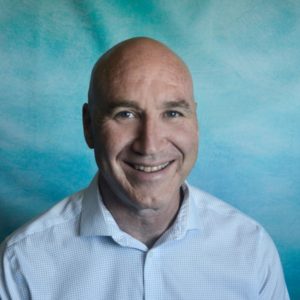
Most of us can’t wait for 2020 to be over. Surely, we think, better things are in store for us in the new year. As we come into the new year an annual tradition will prevail. Even if you don’t actually write down some New Year’s resolutions, I’ll bet you at least think about what you want in the coming year. Keep reading and I’ll get to why this seemingly inane tradition could be one of your greatest coaching opportunities in all of 2021.
I started my coaching journey over 20 years ago when I wrestled with a critical question: How do people experience change? You see, I was part of a denominational renewal movement that invested millions of dollars in leadership development. I was a mentoring leader and consultant helping leaders see what was wrong and giving them a path forward to change. But more often than not, all that information didn’t lead to appreciable differences for them as a leader or the ministries they were leading. Sound familiar?
Frustrated with this recurring result I started looking for a different way, a different approach. This is where coaching entered my world and I discovered through intentional conversations utilizing a unique set of skills and a particular mindset people actually experienced change and transformation. I’ve been a coaching fan and fanatic ever since!
Advancements in technology have allowed us to take a look inside the brain while engaged in growth and learning. I’m simplifying things greatly but an essential insight is you can’t experience growth when you’re stressed out. In fact, negative stress kicks our sympathetic nervous system (SNS) into gear – think fight, flight, freeze response. This results in a whole lot of negative physical, mental and emotional reactions that get in the way of anything but basic survival.
If people are going to grow, they do it when they are in a parasympathetic nervous system (PNS) response – think rest and digest. With the PNS, all kinds of positive chemicals start flowing, your body and brain open up to new insights, creativity and growth. Physically, mentally and emotionally you are open to the work of growth.
The work of Dr. Richard Boyatzis of Case Western Reserve University has shown there are two critical elements to moving someone into a PNS response:
- A positive, resonant relationship of understanding and support and,
- A positive, future orientation that focuses on their Ideal Self and their strengths.
If you are being a good coach, you are going to be the first element. This means you have done the work of creating a healthy relationship with your client, you have created the sacred space where the client can be honest, unguarded and non-defensive, trusting they will not be criticized or judged. This is no small thing and takes a level of skill and practice to create this type of environment in a short amount of time.
The second element happens when you help the client have clarity around the Ideal Self. The Ideal Self is the person the client envisions themself being when they are successful, healthy, fulfilled and living their best life. The Ideal Self can be defined through accomplishments or through character. Usually, it will be a combination of both. As well, you help the client have clarity about the strengths they possess that will help them move closer to their Ideal Self. These are the resources (physical, emotional, relational, spiritual), experiences and character qualities already evident in their lives they can draw upon to attain their Ideal Self.
For the past 8 years I have had a coaching client who has changed employers twice, started his own business, doubled the size of his business, moved across the country and hired multiple employees, to name just a few of the transitions. Early on in our coaching he identified his personal Top 5 Priorities (The Ideal Self). In every decision he has made, this list has come up as a guide. And over the eight years, only one of the five priorities has been changed.
Clients very often come to a coaching session with a problem to solve. This is most often times what Boyatzis calls the Real Self or an expression of the gap between the Real Self and the Ideal Self. Functional magnetic resonance imaging (fMRI) scans have shown when coaching happens around our Gaps, it triggers the SNS – our stress response. That’s a problem because although the issue is a growth opportunity it is not a mental growth place.
Since coaching conversations are about the obstacles and opportunities clients are facing and most of them are presented in the form of a problem, what can we do to move them to a positive mental state where growth can happen? Approach the conversation from who they want to be and how they best accomplish their goals – their Ideal Self and strengths.
Getting Practical
Here are some ways you can help your client get clarity around their Ideal Self and Strengths:
- 10 Dreams in 5 Years exercise – Have your client write a list of the 10 things they want to accomplish in the next 5 years. Making them identify 10 pushes them to work at it.
- StrengthsFinder Assessment – have your client do the Clifton StrengthsFinder Assessment online and keep their strengths as a part of the coaching conversation.
- Create a Top 5 Values list with the client – identify what is most important to them.
- Create an Essentials list – what are their essential relationships and what is most important about who they want to be in those relationships. (Check out Essentialism by Greg McKeown.)
- Use a personality assessment – Enneagram, MBTI, DiSC, Emotional Intelligence – to help the client be aware of their wiring and focus on the positive aspects.
- Utilize the CAM High Performance Patterns e-course to help clients identify who they are at their best and how they accomplish what’s important.
So how does January 1st, 2021 fit in as an opportunity, you ask? When someone engages in the exercise of thinking about New Year’s resolutions they are thinking about their Ideal Self. They are dabbling (probably rather poorly, to be honest) with one of the essential elements of true growth and change! For example, the most common New Year’s resolution of losing weight is about the Ideal Self of being healthy. This is a great time for you to coach new and old clients around clarity of their Ideal Self and strengths.
Every client you engage with should have some awareness around their Ideal Self and strengths. In a long-term coaching relationship you should make it an intentional element. This approach is key to coaching the person and not the problem.
Lastly, it is unwise to do with others what you aren’t willing to do yourself. Start with you. Get someone to coach you around clarity of your Ideal Self and strengths. It’s the way you’ll grow.
**In 2019, Dr. Richard Boyatzis and his co-authors released the book Helping People Change bringing the perspective of neuroscience into the discussion of coaching and how people change. For a deeper dive, check out his book.


